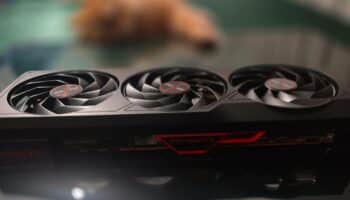Introduction
The Steam Deck is one of the most interesting things to happen to the gaming industry in recent times in my opinion. It’s a handheld console, but that’s not all it is. It can be a competent media device and is also great for taking your work on the go. One could even replace their laptop with it. It is quite a versatile device. I’m writing this review on Google Docs on the Microsoft Edge browser, plugged into my monitor via HDMI with a mouse and keyboard connected over Bluetooth. Crazy times. Yes, there will be quite a few comparisons here with the Nintendo Switch as they are both handhelds. And no matter what anybody says, in my opinion, it is targeted at the same audience, unless they are really into Nintendo-exclusive games.
Design and Build Quality
The Steam Deck boasts a sleek, black design and feels surprisingly lightweight despite its appearance. The ergonomic design makes it comfortable to hold for hours, even for those with medium to large hands, it’s more comfortable than the Nintendo Switch. The buttons and joysticks are great too, again, far superior to the Nintendo Switch. The trackpad is a new input option that hasn’t been fully utilized yet but can emulate a mouse when in desktop mode. The D-pad could be better and similar to 8bitdo or Xbox One Controller’s D-pad. The Steam Deck also features four paddle buttons at the back which are comfortable to hold and easy to avoid accidentally pressing. The Steam Deck’s input is similar to Xbox controllers and weighs 669 grams. Nice.
Display
The Steam Deck’s display features a 7-inch, 1280×800 resolution, with a 16:10 aspect ratio. It has a brightness of around 400 nits and is touch-enabled, not as responsive as a flagship smartphone, but decent. It also has an ambient light sensor. The colour reproduction is not as good as the Nintendo Switch OLED screen, but it can be improved via Steam Deck plugins like “vibrantDeck”, a separate article on that in the following days. The screen is capped at 60 Hz, which is suitable for handheld gaming.
Performance
The Steam Deck offers superior performance compared to the Nintendo Switch, older games and indie titles run at smooth 60 FPS and AAA titles at 30 FPS or even 45 FPS with some graphic settings adjustments. It is equipped with an AMD APU, Zen 2 4c/8t CPU 2.4-3.5GHz, 8 RDNA 2 CUs GPU 1.0-1.6GHz, and 16 GB LPDDR5 RAM.
Battery
The Steam Deck’s battery life is decent for indie and older titles, lasting up to 5 hours, but falls short for heavy AAA titles, lasting around 90 minutes. The company plans to improve battery life in the next version of the Steam Deck.
Game Library
The Steam Deck offers a vast game library, you can play most games you already own on Steam. Steam also has a “Great on Deck” section for games that have been verified to run well on the device. Most games that aren’t verified still run well, and you can either look up on the internet or try them out for yourself. The game library is constantly updated with sales and new games, a great device for third-party games. Games are also usually priced better on steam compared to other platforms.
Repairability
The Steam Deck has a high repairability rate of 7 out of 10, according to iFixit, making it easy to fix and maintain. Visit iFixit’s website for a list of replacement parts. https://www.ifixit.com/Device/Steam_Deck
Additional Features
The Steam Deck’s upgradable internal storage is a fantastic feature, allowing users to install a 2230 m.2-module SSD in the 64GB model, boosting storage capacity up to 1 TB internal storage. While it may not be for everyone, it’s an ideal option for those with technical knowledge.
Conclusion
The Steam Deck is a game-changing handheld device that offers unparalleled versatility in gaming. It allows for seamless cross-play between handheld and PC with the same save and supports a wide range of controllers from Nintendo Switch, PS4, PS5 and Xbox. The software has improved greatly since its launch. A perfect choice for both new and experienced gamers, it offers access to a vast game library and is a great companion device for PC gamers and a versatile device for anyone who wants to game on the go—competitively priced at $399 for 64GB, $529 for 256GB, and $649 for 512GB. At the time of its launch, Steam officially sold it only in the United States, Canada, the European Union, and the United Kingdom, it is now available in four more countries, Japan, South Korea, Hong Kong, and Taiwan. Highly recommended.






